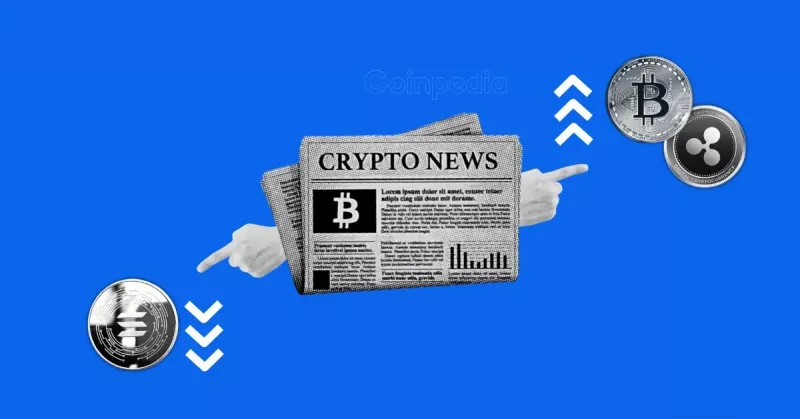The Ethereum Pectra and Fusaka upgrades are set to go live this year, and Binance Research looked into their impacts on the broader Ethereum ecosystem.
The upgrades are scheduled to go live on mainnet in May 2025 and late 2025, respectively. Notably, no code changes are aimed at strengthening ETH as “ultrasound money”, nor improving Ethereum as a more censorship-resistant blockchain.
Ethereum Faces Stiff Competition from BNB and Solana Blockchains
Ethereum’s long-standing position as the dominant Layer 1 (L1) has come under intense competition from Solana and BNB Smart Chain in recent months. Recent data indicates that Solana has outperformed Ethereum in terms of DEX activity and fees generated from the chain on occasion, while BNB Smart Chain has been closing the gap throughout 2025.
Some reasons for Ethereum losing ground include slow and expensive transaction costs on the L1, which increases user friction, fragmented developer mindshare and liquidity due to the popularity of Layer 2s (L2s), and less value accrual to the L1 after offloading execution to the L2s.
To address these concerns, Ethereum developers will roll out two network upgrades before the end of the year. The Pectra and Fusaka upgrades will address some of the Ethereum network’s challenges.
Pectra Focuses on Staking, Blobs, and Account Abstraction Improvements
According to Binance Research, the Pectra upgrade, which is slated to go live in May 2025, will center around staking, blobs, and account abstraction improvements. EIP-7251 will raise the maximum effective balance for staking from 32 ETH to 2,048 ETH to address increasing network strain from a large validator size of over 1 million today.
The goal of increasing MaxEB is to encourage entities with large amounts of stake to start consolidating their existing validators. Should the top 20 entities by stake consolidate their validators, we could see a reduction of 785,302 validators, which should free up bandwidth across the network so it runs more smoothly.
Also, EIP-7691 will increase target and maximum blob capacity from 3 to 6 and 6 to 9, respectively, to enable more data to be posted to the L1 while retaining low costs. With this improvement, rollups can use blobs, which enhance scalability and efficiency. Blobs today are priced dynamically based on blob congestion. When blob usage reaches a target limit of 50%, a base fee is introduced to regulate demand usage by all L2s. For each increase in blob usage above the 50% limit, base fees are further increased by 12.5%.
Finally, EIP-7702 will transform Externally Owned Accounts (EOAs) into a smart contract wallet that can benefit from features such as bundled transactions, gas sponsorship, social recovery, etc.
Other upgrades within Pectra include EIP-2935, EIP-2537, and EIP-7549.
The Fusaka Upgrade to Focus on PeerDAS and EOF
The Fusaka testnet will start after Pectra goes live, and the full upgrade is expected to happen by the end of 2025. While the scope of upgrades is still under discussion, there is consensus that the key focus of Fusaka will be PeerDAS (Data Availability Sampling) and Ethereum Object Format (EOF).
Fusaka will introduce PeerDAS as part of EIP-7594 as a stepping stone towards full data availability sampling. PeerDAS is a networking protocol designed to enable beacon nodes to perform data availability sampling (DAS), ensuring that blob data is available while allowing nodes to download only a subset of the data.
Blobs will be converted into an extended matrix through a technique called one-dimensional erasure coding extension, which encodes the data and generates KZG
proofs for each cell in the matrix.
With PeerDAS, each node only needs to download a small part of the data and uses cryptographic checks to confirm that the full data set is still there. This reduces the amount of data each node needs to store and share, making the network more efficient. By making it easier to run a node, PeerDAS encourages more people to participate, increasing the network's decentralization and overall robustness.
The Ethereum Object Format (EOF) will be an overhaul of the existing EVM execution
environment. EOF introduces several key improvements such as:
● Modularity: Separates code and state, enhancing organization and readability.
● Enhanced Validation: Implements stricter checks during contract deployment to
prevent vulnerabilities.
● Gas Efficiency: Optimizes bytecode to reduce gas costs.
● Control Flow: Provides new mechanisms for more efficient control flow
Management.
EOF will validate code during the contract creation process, enabling code versioning without requiring an additional version field in the account. Versioning is crucial for managing the lifecycle of features, especially when implementing significant changes like modifications to control flow or introducing features such as account abstraction. This structured approach simplifies the process, reduces runtime overhead, and facilitates the evolution of the Ethereum Virtual Machine (EVM).
Fundamentally, Ethereum remains the largest smart contract platform with over $45.8 billion in Total Value Secured, and possesses the most vibrant developer ecosystem of
over 6,000 developers.
Binance Research concluded that while the Ethereum network faces its challenges, it has paved the way for all smart contract platforms and has seen groundbreaking innovation such as DeFi, NFTs, and gaming. From the proof-of-stake transition to the Shapella upgrade and now the upcoming Pectra and Fusaka upgrades, it is remarkable what Ethereum has managed to achieve as an open-source, decentralized network.
 Hassan Maishera
Hassan Maishera






